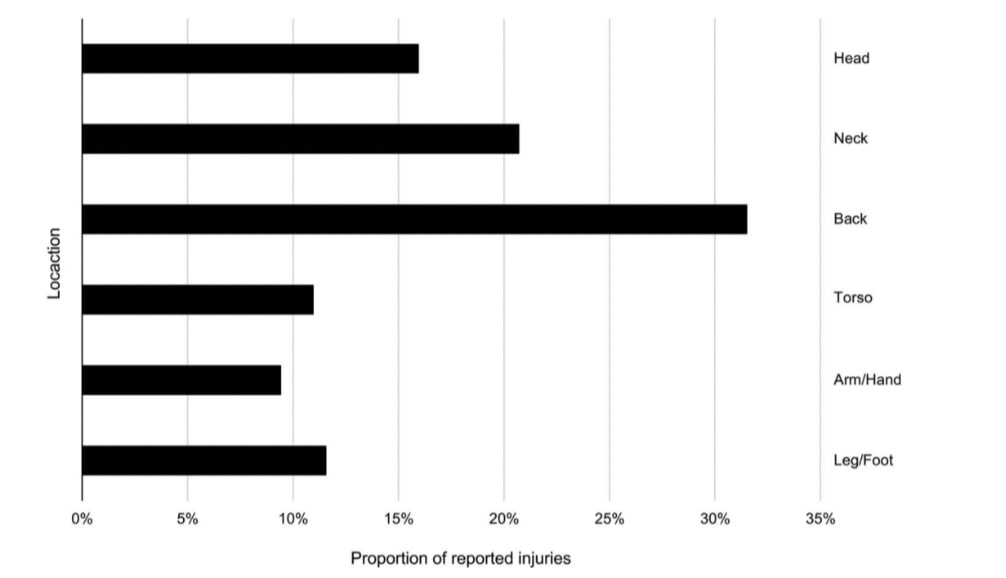MILITARY BOAT SLAMS CAUSE SEVERE INJURIES AND DISABILITY
A paper published last week in a medical journal (Clinical Orthopaedics and Related Research) concludes that operators of professional high-speed boats suffer severe, acute, and permanent injuries caused by slamming-induced hull impacts.
The statistics (from 214 retired military high-speed boat operators) show that on average, each operator suffered four back injuries, three neck injuries, two head injuries, one torso injury, one upper extremity injury, and one lower extremity injury during a 10-year period of service. This equates to more than 1 serious injury for each year of service shown in the chart below:
Reporting shows that 39% of respondents required surgery at least once for these injuries, 33% experienced loss of consciousness as a result of the impacts and 70% reported impaired capability to perform their job on-board because of impact exposure.
Of the 1827 injuries reported, sideways or vertical impacts were the most common causes. Other causes are summarised below:

The authors estimate that more than 2000 boats in the United States alone (from just Navy, Army, Special Operations, and Coastguard) produce slamming impacts similar to those reported in the study.
Apart from vetting and training of operators to reduce boat speeds, prevention of these injuries relies upon selection of boats with softer riding hull shapes and the installation of suspension seats which are scientifically proven to mitigate injurious impacts.
References:
- Johan Ullman J, David Hengst, D, Carpenter R, Robinson Y. “Does Military High-speed Boat Slamming Cause Severe Injuries and Disability?” Clin Orthop Relat Res (2022) 480:1-11; DOI 10.1097/CORR.0000000000002420
- Does Military High-speed Boat Slamming Cause Severe Injuries and DisabilityAllami MK, Drakoulakis EG, Dinopoulos H, Dunsmuir R, Macdonald DA, Giannoudis PV. Thoracolumbar spinal injuries following speedboat accidents: is it time to change the safety regulations? Injury Extra. 2005;36:511-516.
- Allen DP, Taunton DJ, Allen R. A study of shock impacts and vibration dose values onboard high-speed marine craft. Transactions of the Royal Institution of Naval Architects Part A: International Journal of Maritime Engineering. 2008;150:1-10.
- Antao P, Soares CG. Causal factors in accidents of high-speed craft and conventional ocean-going vessels. Reliability Engineering and System Safety. 2008;93:1292-1304.
This article looks at an issue that is heavily under reported and is something a majority of boat owners may experience. Suspension seats are scientifically proven to mitigate injurious impacts, the same way seat belts and airbags are used to keep you safe in cars. Suspension seating can seriously help avoiding injury and prolonging time on the water, but most of all protecting yourself and your passengers.
